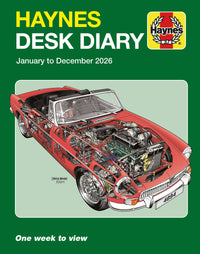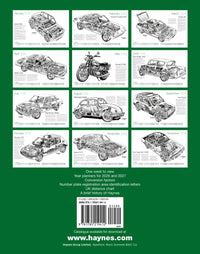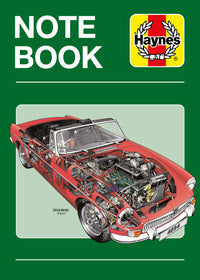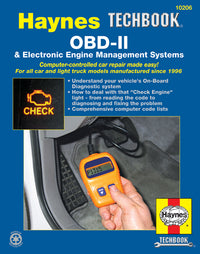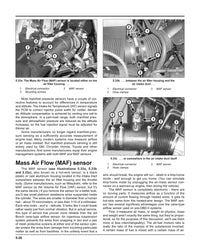The humble Vauxhall Astra has been around for what seems like forever. It's one of those cars that has always been there to get us about in a comfy, reliable, affordable way, yet we never seem to give it much thought.
Did you know the Astra has been around since 1979? Did you know it has been through a massive SEVEN generations? And did you know that Vauxhall has made literally millions of them, a fair portion of which on UK soil?
Oh yes, the Astra is a mightily impressive car. So here's a Haynes Spotter's Guide to give you the opportunity to swot up a bit more!

Mk1 Vauxhall Astra
Built from 1979 to 1984
The first Astra was built to replace the ageing Viva, a small, rear-wheel drive car that was, even in the 19070s, looking a bit antiquated. The Astra would change all that. It was front-wheel drive, meaning it had lots more space inside for passengers, what with not having to accommodate cumbersome things like rear axles and propshafts.
The 1300 and 1600 overhead camshaft engines were also a triumph in terms of reliability and economy when compared to the Viva.
The Mk1 Astra is a rare sight these days, but if you think you've spotted one, here's how to be sure. The front had big, square headlights with tall, thin indicators fitted to them.
The front end is very clean, with a straight-edged bonnet and straight but thin black metal bumpers with plastic end caps. At the rear, it's another meeting of straight lines, with tall, thin light clusters.
Astra fact: The Mk1 GTE was fitted with a 1.8 fuel-injected OHC engine, and it was the first 'hot' Astra.

Mk2 Vauxhall Astra
Built from 1984 to 1991
The Mk1 proved to Vauxhall that the market was keen, so for the Mk2 it went all out. Other companies may have just facelifted the Mk1, but not Vauxhall - it built an entirely new car.
It was a good move on Vauxhall's part, too, as it was crowned European Car of the Year in 1985. It was also available in more guises.
There was a hatch and estate, as before, but there was also a saloon (known as the Belmont) as well as a convertible version. Basically, Vauxhall took the fight to the Ford Escort of the time.
To spot one, you're looking for a slightly more curved shape, along with more sculpted headlights that feature a softer line into the grille.
The sharp-edged bonnet went in favour of one that curved and dropped between the front lights. Also, the bumpers on the Mk2 were plastic.
Astra fact: The MkII Astra GTE was straight out of the future - the dash was digital!

Mk3 Vauxhall Astra
Built from 1991 to 1998
For the Mk3, Vauxhall upped the build quality and also increased the range. Again, it was available as an estate, a hatch, a convertible and as a saloon. However, the trim levels increased massively, with a noticeable increase in performance models.
The GTE was gone, but the Si, SRi and mighty GSi made up for it. There was also a bigger push on diesels, with several options being made available.
There was the naturally aspirated 1.7 diesel, the turbocharged 1.7 and also the 1.7 Isuzu turbocharged diesel, perfect for swallowing the miles without swallowing all the fuel.
To spot a MkIII, you need to look for a more rounded shape, slightly thinner front lights with clear indicators, a straight-edged bonnet returns, but is joined by a body colour grille, while the real lights changed into square clusters.
Finally, if there is a rear quarter window separate from the door, you're looking at a Mk3
Astra fact: The MkIII marketed on its safety credentials. Despite EuroNCAP not yet being a thing, Vauxhall saw to it that the MkIII was one of the strongest cars it ever built.
- Get our Vauxhall Astra MkII manual

Mk4 Vauxhall Astra
Built from 1998 to 2006
While the Mk3 was a success in terms of safety and economy, it wasn't exactly what you'd call a joy to drive. In fact, it was regularly criticised for the way it handled, so when it came to the MkIV, Vauxhall had a lot of work to do.
The bods at the design table completely reworked the chassis and suspension, making it a much better car to drive in the process.
They also made it even stronger, and the newly formed EuroNCAP awarded it the full four stars. Although all of this came at a cost; the Mk4 Astra wasn't exactly what you'd call pretty.
To spot one, you need to look for bigger, wider headlights that pull back further into the bonnet and wings.
Also, for the first time, the headlights and indicators were one unit. The bonnet and grille combination made a return, too. At the rear, it was a kind of scrunched-up, tall affair with big light clusters. Not pretty, but definitely distinctive.
Astra fact: the Mk4 Astra was the first one to be offered with a turbocharged petrol engine, courtesy of the mighty 189bhp SRi.
- Get our Vauxhall Astra MkIV manual

Mk5 Vauxhall Astra
Built from 2004 to 2010
The Mk5 Astra blew our socks off when it came out in 2004. It was a wild, wild departure from the car before it. We could have it as a hatch or an estate, although the saloon was binned off; mainly because we're not big fans of saloon cars.
We also got it in three-door guise, but it wasn't just a five-door model with some doors removed. It was a bespoke model badged as the 'Sports Hatch'. It was also the model that would be the basis for the mighty, popping, snorting, tyre-eating VXR version.
To spot a Mk5, you need to look for big, diamond-shaped headlights that pull back high into the bonnet and wings. The grille is once again separate from the bonnet, though the bonnet itself still drops down between the front lights.
The rear lights are also diamond-shaped and are bridged by a chrome strip that runs across the width of the boot lid.
Astra fact: The Mk5 Astra was the first Astra to be awarded the full five stars by crash-testers, EuroNCAP.
- Get the Haynes manual for the Vauxhall Astra Mk5

Mk6 Vauxhall Astra
Built from 2009 to 2015
The Mk5 Astra was let down by its fit and finish. It wasn't a solid'feeling car. With the Mk6, Vauxhall sorted all that out by making sure the staff at Elsmere Port screwed it together properly, and with only the finest materials.
As such, the Mk6 was a triumph. It was solid, robust and had a feel to it that could rival the German cars. Again, we could have it in hatch or estate, and the three-door model was a rare thing among rivals. In this case, it was known as the Astra GTC, or grand touring coupé. There was no convertible, though. For that you had to buy a Cascada.
To spot one, look for bigger front headlights, a more rounded overall shape and a body with no rubbing/trim strips. On the side, you'll see a rear quarter window that's not part of the doors, while at the back, you'll have a light cluster that sits in both the body and the boot lid itself.
Astra fact: The Mk6 was used as the 'reasonably priced car' on Top Gear.
- Get our Vauxhall Astra MkVI manual

Mk7 Vauxhall Astra
Built from 2015 to 2022
That brings us to the Mk7, which is probably the most gentle of all the Astra's evolutions. Think of it as more of a heavy facelift of the Mk6. It has a sharper swage line running along the sides, and the headlights are slightly more sculpted, plus they meet the grille.
The rear lights are thinner, but again are mounted on both the body and the boot lid itself. Also, the side rear quarter window is now a part of the door again.

Mk8 Vauxhall Astra
Built from 2022 to present
Stellantis opted for something radical with the eighth-gen Astra, which shares its underpinnings with the Peugeot 308 and DS4. The Astra's sharp styling means you're unlikely to confuse it for anything other than a Vauxhall, and it shares that 'visor' face with the firm's other models.
Under the bonnet, there's a choice of petrol or electric power, and there are hatchback or estate bodystyles.
It's hard to say what the future will be for this popular model. It's been a mainstay on our roads for decades and has made many motorists very happy indeed. Let's just hope that it will continue to do so.
Astra fact: Over 3,000,000 Astras have been built and sold over its lifetime!


